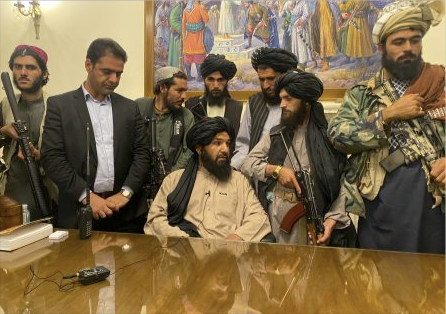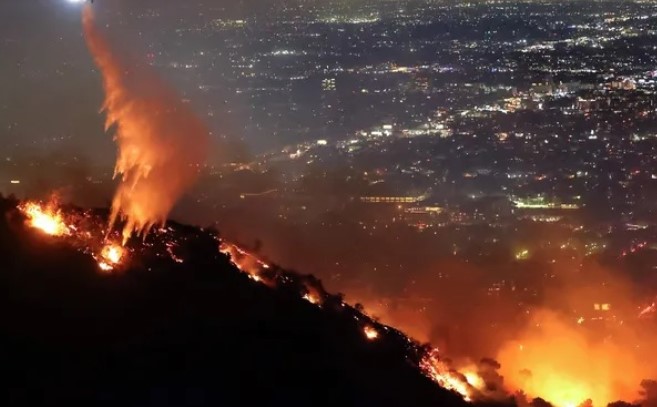
STRATEGIC ASSESSMENT. More than one year after the August 2021 takeover of Afghanistan by the Taliban, many concerns about the regional security implications for their neighbors and the international community have not yet materialized. The Taliban is riven by divisions between hardline Islamists similar to those that led the 1996-2001 Taliban regime and pragmatists who have spent time outside Afghanistan. It appears the Taliban have been able to avert major domestic insecurity and upheaval, though at the cost of half the population’s rights and security. The movement’s pragmatists have not prevailed in internal debates on some major human rights issues, particularly providing secondary education for girls and women’s employment. However, Taliban officials have generally sought to avoid implementing policies that overtly reflect their prior support to terrorist groups which rendered the movement vulnerable to rapid collapse following the U.S. intervention in the country after the September 11, 2011, attacks. Yet, the movement’s extensive use of force against domestic opponents and minorities could pose challenges to the Taliban’s governance of the country over the medium to longer term.
For many in Afghanistan who felt betrayed and ill-used by the factions and warlords that fomented the civil war and then by the post-2001 governments whose ambitions did not necessarily lead to benefits for all Afghans, the Taliban’s takeover provided some anticipation of improvement. The benefits of ending the civil war counterbalanced, for some Afghans, the Taliban’s cancellation of the process of democratic elections, its constraints on civil society organizations, and its reversal of many of the gains in gender equality and women’s rights made since 2001. Yet, the Taliban’s image as a provider of security has been tarnished by continued, if sporadic, attacks by the Afghanistan affiliate of the Islamic State organization, Islamic State Khorasan Province (ISK), as well as some limited armed opposition attacks in northern Afghanistan by forces loyal to the Tajik-dominated National Resistance Front (NRF). Many ISK attacks have targeted mosques and other locations frequented by Afghanistan’s minority Hazara Shia community, precisely to foment ethnic and religious dissent against the Taliban. In addition, women and other groups have challenged Taliban leaders and demanded the reinstatement of the freedoms and progress they have enjoyed since 2001. The Taliban have sought to silence protests, in some cases by violently beating and using live ammunition against demonstrators, perhaps setting their regime up for long-term challenges by Afghans who forcefully oppose authoritarianism.
The Taliban have largely calmed the initial security concerns of neighbors such as Iran, India, Russia, and the Central Asian states that a new Taliban regime would seek to foment Islamist radicalism beyond Afghanistan’s borders. No government has yet granted official recognition to the Taliban as the legitimate government of Afghanistan. Still, Taliban leaders have been received in Turkey, the Persian Gulf states, and elsewhere, and have regularly received high-ranking officials from major powers, including China and Japan. Iran, among the most skeptical of the Taliban over fears for the treatment of the Hazaras and Persian-speaking Afghans, has convened at least one meeting to try to reconcile the Taliban with Tajik factions. China has organized meetings of the foreign ministers of Afghanistan’s neighbors. Russia’s Special Representative to Afghanistan, Zamir Nabievich Kabulov, is planning to convene a meeting of the “Moscow format” on Afghanistan on November 16 to persuade the Taliban to form a more inclusive government. The United Arab Emirates (UAE), Qatar, and Saudi Arabia, all have regular engagements with Taliban officials. The United States has continued to engage with the Taliban on regional security issues, even though some U.S. officials considered the presence of al-Qaeda leader Ayman al-Zawahiri in Kabul – where he was killed by a U.S. armed drone strike on July 31 – as violating the movement’s commitments under the February 2020 “Doha Agreement” not to allow al-Qaeda to operate on Afghan soil.
The one regional state with which the Taliban’s relationship has unexpectedly deteriorated is the movement’s historic mentor and supporter, Pakistan. The Taliban has not, as Islamabad expected, helped Pakistan secure its border by denying a safe haven to the Tehrik-e-Taliban Pakistan (TTP, Pakistani Taliban). Pakistani forces have, on occasion, fired on TTP bases inside Afghanistan. Concurrently, although many of the high-ranking foreign visitors to Kabul have discussed making significant investments in Afghanistan’s industries, such as mining of its vast mineral resources, no major deals have been signed since the Taliban takeover.
The hesitancy of investors to make major commitments to Taliban-controlled Afghanistan has been matched by a decline in donor interest in helping the Taliban meet the humanitarian needs of the population. Already it is often challenging to muster funds for humanitarian appeals, with donated funds often falling far short of pledged numbers. According to an estimate late last year by the United Nations Development Fund (UNDP), as much as 97 percent of the Afghan population is at risk of living below the poverty line in 2022. More than ten months after the United Nations Office for the Coordination of Humanitarian Affairs (OCHA) and United Nations High Commissioner for Refugees (UNHCR) launched the largest single-country funding appeal to address the humanitarian and refugee and internally displaced persons crises in Afghanistan, fewer than half of the appeal has been funded. Following a visit to Afghanistan in early October, Tomas Niklasson, European Union (EU) special envoy for Afghanistan, warned that: “Afghanistan is facing a harsh winter. I urge China, Russia, and the OIC [Organization of Islamic Cooperation] to follow the example of the U.K., the U.S., the EU, and others by significantly stepping up humanitarian assistance.” Such funding shortfalls leave millions of Afghans increasingly vulnerable as winter approaches to escalating food insecurity, acute malnutrition, and a worsening economic outlook, particularly the estimated 3.5 million internally displaced persons – most of whom are women and children, according to the UNHCR – within the country. Humanitarian organizations attribute the diminishing attention and financial commitments to Afghanistan, partly, to pressing humanitarian needs caused by Russia’s war in Ukraine. However, more donors will likely help Afghanistan if the Taliban can consistently demonstrate its cooperation against terrorist groups, its willingness to compromise with domestic opponents and uphold its treaty obligations on human rights.





